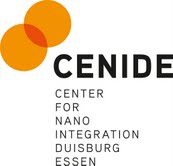Home > Press > Silver is not an innocuous germicide after all
 |
Abstract:
Silver, an element long favored by medicine for its antiseptic properties, turns out to be damaging to human fibroblasts when used in the dosages required to be effective. Furthermore, the presence of albumin weakens silver's ability to fight bacteria. These findings were recently made by a team of researchers working under the direction of Dr. Stephan Barcikowski, a professor with the Center for Nanointegration (CENIDE) at University of Duisburg-Essen (UDE). The findings have been published in three consecutive papers.
Silver is not an innocuous germicide after all
Duisburg, Germany | Posted on September 24th, 2012The team conducted a series of tests examining the antibacterial activities of silver nanoparticles that the researchers produced themselves using laser technology (DOI: 10.2351/1.4730803). The scientists bound the nanoparticles to various synthetic materials so that they would not be absorbed by the body but would remain effective, because their large surfaces emit enough silver ions. It is these ions that are, in fact, the active substances that, for example, kill bacteria at a wound, reducing the risk for infection. Silver is therefore a substance well-suited for preserving medical products or for covering burn wounds.
Experiments using various bacteria conducted in collaboration with the clinic at the Hannover Medical School under the direction of Dr. Meike Stiesch confirmed silver's germicidal properties. Subsequent studies, however, demonstrated that at the concentrations required for killing bacteria, the silver ions also damaged fibroblasts to a significant degree. "We hadn't expected this to be the case, of course, given that silver is already widely used throughout medicine," said Barcikowski, Chair of Technical Chemistry I at the UDE and editor-in-chief of the journal BioNanoMaterials. "But further testing proved that it was the ions themselves that were damaging the cells and not, as we had at first suspected, the synthetic materials." When the scientists then mixed the samples with albumin, silver's antibacterial effectiveness dropped, but the damaging effect on the cells remained the same. The therapeutic margin is therefore extremely narrow in this case, making medical applications risky (DOI: 10.1002/adem.201180016).
Further studies are currently investigating whether it is possible to use the wound-healing properties of nanomaterials in a targeted manner. The study, "In-situ conjugation of nanoparticles using ultra-short pulsed laser ablation in monomer solution for electrospinning at burn wound sites," which is part of the DFG Priority Program 1327 "Sub-100 nm Structures," is currently looking into this. In collaboration with RWTH Aachen University and the Hannover Medical School, a team, also under the direction of Barcikowski, is researching whether nanoparticles composed of milder substances, such as zinc, iron, and magnesium, can be used to heal burn wounds. The researchers would like to test less harmful nanomaterials and then make them usable for therapeutic purposes (DOI: 10.1039/c2ra20546g).
####
For more information, please click here
Contacts:
Birte Vierjahn
Phone: 0049 203 379 1456
Copyright © CENIDE, University of Duisburg-Essen
If you have a comment, please Contact us.Issuers of news releases, not 7th Wave, Inc. or Nanotechnology Now, are solely responsible for the accuracy of the content.
| Related News Press |
News and information
![]() Simulating magnetization in a Heisenberg quantum spin chain April 5th, 2024
Simulating magnetization in a Heisenberg quantum spin chain April 5th, 2024
![]() NRL charters Navy’s quantum inertial navigation path to reduce drift April 5th, 2024
NRL charters Navy’s quantum inertial navigation path to reduce drift April 5th, 2024
![]() Discovery points path to flash-like memory for storing qubits: Rice find could hasten development of nonvolatile quantum memory April 5th, 2024
Discovery points path to flash-like memory for storing qubits: Rice find could hasten development of nonvolatile quantum memory April 5th, 2024
Nanomedicine
![]() New micromaterial releases nanoparticles that selectively destroy cancer cells April 5th, 2024
New micromaterial releases nanoparticles that selectively destroy cancer cells April 5th, 2024
![]() Good as gold - improving infectious disease testing with gold nanoparticles April 5th, 2024
Good as gold - improving infectious disease testing with gold nanoparticles April 5th, 2024
![]() Researchers develop artificial building blocks of life March 8th, 2024
Researchers develop artificial building blocks of life March 8th, 2024
Discoveries
![]() Chemical reactions can scramble quantum information as well as black holes April 5th, 2024
Chemical reactions can scramble quantum information as well as black holes April 5th, 2024
![]() New micromaterial releases nanoparticles that selectively destroy cancer cells April 5th, 2024
New micromaterial releases nanoparticles that selectively destroy cancer cells April 5th, 2024
![]() Utilizing palladium for addressing contact issues of buried oxide thin film transistors April 5th, 2024
Utilizing palladium for addressing contact issues of buried oxide thin film transistors April 5th, 2024
Announcements
![]() NRL charters Navy’s quantum inertial navigation path to reduce drift April 5th, 2024
NRL charters Navy’s quantum inertial navigation path to reduce drift April 5th, 2024
![]() Discovery points path to flash-like memory for storing qubits: Rice find could hasten development of nonvolatile quantum memory April 5th, 2024
Discovery points path to flash-like memory for storing qubits: Rice find could hasten development of nonvolatile quantum memory April 5th, 2024
Safety-Nanoparticles/Risk management
![]() Tests find no free-standing nanotubes released from tire tread wear September 8th, 2023
Tests find no free-standing nanotubes released from tire tread wear September 8th, 2023
![]() Billions of nanoplastics released when microwaving baby food containers: Exposure to plastic particles kills up to 75% of cultured kidney cells July 21st, 2023
Billions of nanoplastics released when microwaving baby food containers: Exposure to plastic particles kills up to 75% of cultured kidney cells July 21st, 2023
|
|
||
|
|
||
| The latest news from around the world, FREE | ||
|
|
||
|
|
||
| Premium Products | ||
|
|
||
|
Only the news you want to read!
Learn More |
||
|
|
||
|
Full-service, expert consulting
Learn More |
||
|
|
||








